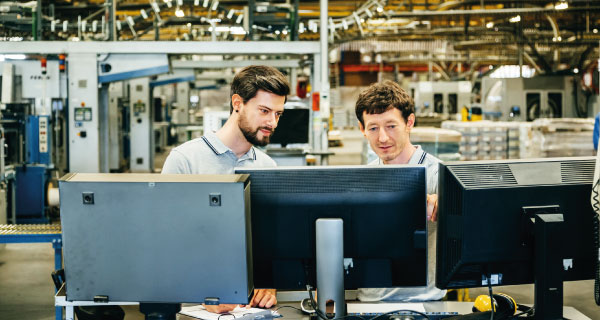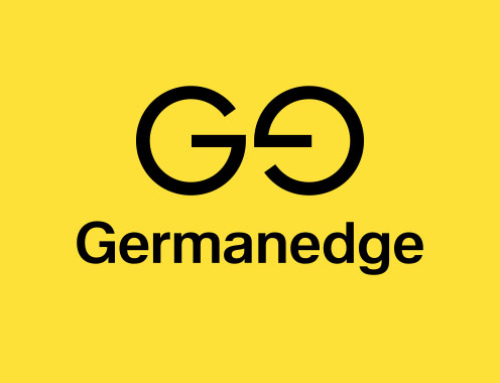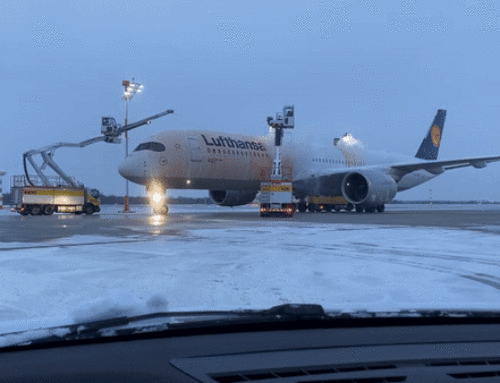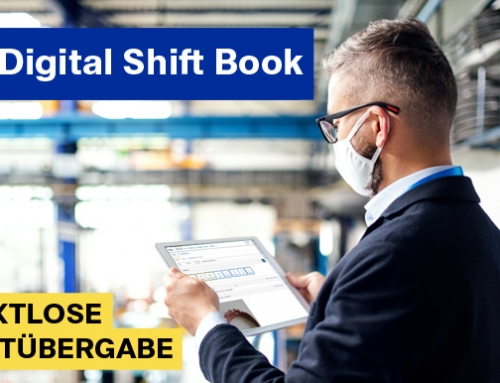In the age of Industry 4.0, more and more systems are intelligently and digitally networked with each other for largely self-organized production. But does that also mean that humans will be completely dispensed with in the future? No, that will not happen. Rather, the worker will become the “connected worker.” Wherever creativity, situation-dependent action and decisions are required, people will be in demand in the future, even in digital production.
The worker will not be replaced by new technologies, but rather supported in order to make better decisions. The additional digital technology leads to high-quality and targeted information being made available in order to be able to react more quickly to errors, to solve problems sustainably and to optimize processes in the long term.
A practical example: End-to-end digital documentation of store floor processes.
The documentation of a shift begins before it even starts. Who will be present? Can the scheduled personnel perform the tasks at hand? Do all employees have the necessary qualifications to perform their tasks?
Consistent shift documentation begins and ends with the planning of the shop floor.
With our personnel planning, all necessary information for the shift is prepared and available at the start of the shift. So are the tasks to be performed and new work instructions.
The employee finds all necessary information for the execution of his activities. In the event of questions or problems, he can draw on all the knowledge that has been stored in our system. Thanks to the networking of the system, it is not only knowledge from his area that he can draw on, but also knowledge from all other production sites. Direct access to this information saves time and supports the processes in the long term.
New shift events can be recorded, e.g. structured by plant, equipment, priority and status, at any time via smartphone or tablet or stationary on the PC. The employee is supported in the process by our software, whether with the help of templates to quickly record frequently recurring content or to offer correction suggestions in the event of incorrect entries.
Another feature of our software is the offline recording of shift events on site, if no connection to the internet is available. The employee can continue working undisturbed and the data will be synchronized as soon as the connection is available again. In this context, it is essential to supplement the information with pictures and videos. As we all know, a picture is worth a thousand words, so nowadays pictures are an essential medium for continuous process optimization. All this is always done in an audit-proof manner. Changes in the entries are recorded continuously and are available later in an audit trail.
No more information is lost!
These millions of shift information only generate transparency if they are in context with each other and interconnected. For example, the connection of event, task and documented execution automatically generates a problem solving process, which is available to many other users for future problem solving. It is important to define responsibilities for the execution of tasks. Who performs which task at which place, at which time? Or, in other words, which tasks have not yet been completed? If the due date is exceeded, escalation and forwarding to persons or groups takes place quite automatically. In everyday work, however, there are not only tasks that are completed once and are thus finished, but also instructions that must be followed over a period of time. For example, the wearing of safety equipment in certain areas. The employee then marks his instruction as read and understood.
This always ensures that all processes comply with the requirements.
At the end of the employee’s workday, all events and open tasks are passed on to the next employee, i.e., to the next shift. Usually this is done with so-called shift handover protocols in the four-eyes principle, as they are possible with our software. The result is a clear presentation of all tasks that have not been completed and events that still need to be processed, as well as linked data from third-party systems if required. These consolidated results are automatically sent to management as a report.
This creates end-to-end digital documentation. All relevant information from the shop floor is available to employees.
You can read about this and other practical examples in our UseCase document, which you can download here.
You can read about the products behind these UseCases and the added value they offer in our Product Bundle, which you can download here.
Deep Dive Paper
You can also read more in-depth information on the “Connected Worker” and collaboration in an increasingly complex production environment in our Deep Dive Paper “Connected Worker: Higher efficiency in the digital production of the future”, which you can download here.
Do you have any questions about the Connted Worker or our solution? Then please fill out the following contact form and send us your message:








